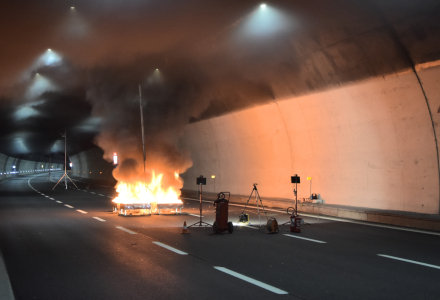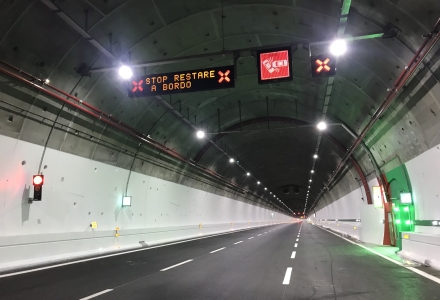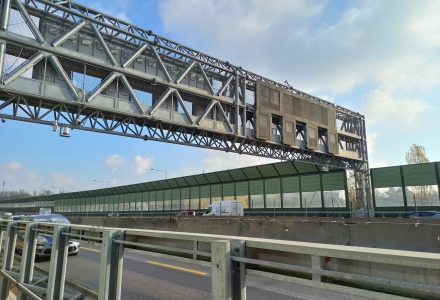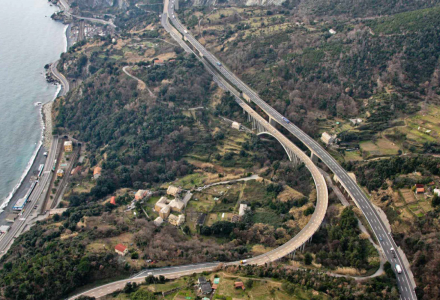
Expansion of the Third Lane of the Barberino-Calenzano Motorway
Client: Spea Engineering S.p.A. now Tecne Gruppo Autostrade S.p.a.
Services in this project:
- Specialist support for technical design
Specialist support services for the execution design of electromechanical installations as part of the construction of a three-lane single-carriageway section of the motorway, totalling approximately 17 kilometres.
In addition to viaducts, the route includes tunnels (9.8 kilometres) equipped with an under-floor emergency escape tunnel accessible from pressurised and compartmentalised escape routes and an automatic fire extinguishing system with a water-foaming agent mixture.
The works include constructing a new three-lane single-carriageway motorway section and doubling the existing A1 motorway between Barberino di Mugello and Calenzano for approximately 17 kilometres.
The route includes two tunnels: Boscaccio (2,200 metres) and S. Lucia (7,600 metres - the longest in Europe with three lanes of traffic), as well as viaducts (up to 550 metres in length).
Engineering design services included the study and development of the following systems:
- MV/LV power distribution, including electrical transformer substations, internal and external cable routes to buildings and tunnels, MV/LV distribution power lines and terminals to the facilities served;
- road and tunnel lighting (standard, emergency, and escape);
- tunnel ventilation (longitudinal) and ventilation of the temporary safety areas and passages;
- conventional fire-fighting systems (water systems - hydrant networks);
- innovative automated mitigation systems for fire emergencies (deluge system) with water and foaming agents;
- fire detection systems with digital and fibre optic linear dispersion fire detectors;
- road and tunnel sensors to assist the ventilation and fire detection systems;
- active video surveillance with integrated automatic monitoring of traffic, related abnormal events and fire (AID technology);
- automatic detection and management of dangerous goods by road transport (ADR);
- VoIP-based "SOS" emergency call service;
- information and active messaging to road and tunnel users (variable message panels and illuminated signs) as well as audio broadcasting (EVAC) along the tunnels;
- environmental monitoring systems (weather systems, traffic counting and classification);
- ultra-wideband geographical (WAN) and local (LAN) data network infrastructures for the implementation of high-tech services along road and motorway routes;
- UHF, VHF, and Wi-Fi (indoor/outdoor) radio coverage, including software checks/simulations and link budget calculations.
The activities also included the study and design of the procedures and algorithms for activating automatic fire-fighting systems installed on tunnel control systems, including the execution of fire simulations in a CFD environment to develop activation model concept methods.
The engineering design phase was then followed by the commissioning phase of the installations, including testing and start-up inspections of all the safety procedures.
Connect with Our Team
Project data
- Country
- Italy
- Location
- Tuscany
- Year
- 2018 - 2019
- Status
- Completed
Other related projects:
Other projects related to this area
-
 Valle d'Aosta
Valle d'Aosta -
 Tuscany
TuscanySanta Lucia and Boscaccio Tunnels: engineering design services for the electromechanical installations
-

Electromechanical installations on the 4th lane of the A4 Motorway
-
 Liguria
Liguria"Gronda di Genova": electromechanical installations
-

Tunnels of Section IV of the Italian Motorway System: Safety Manager


